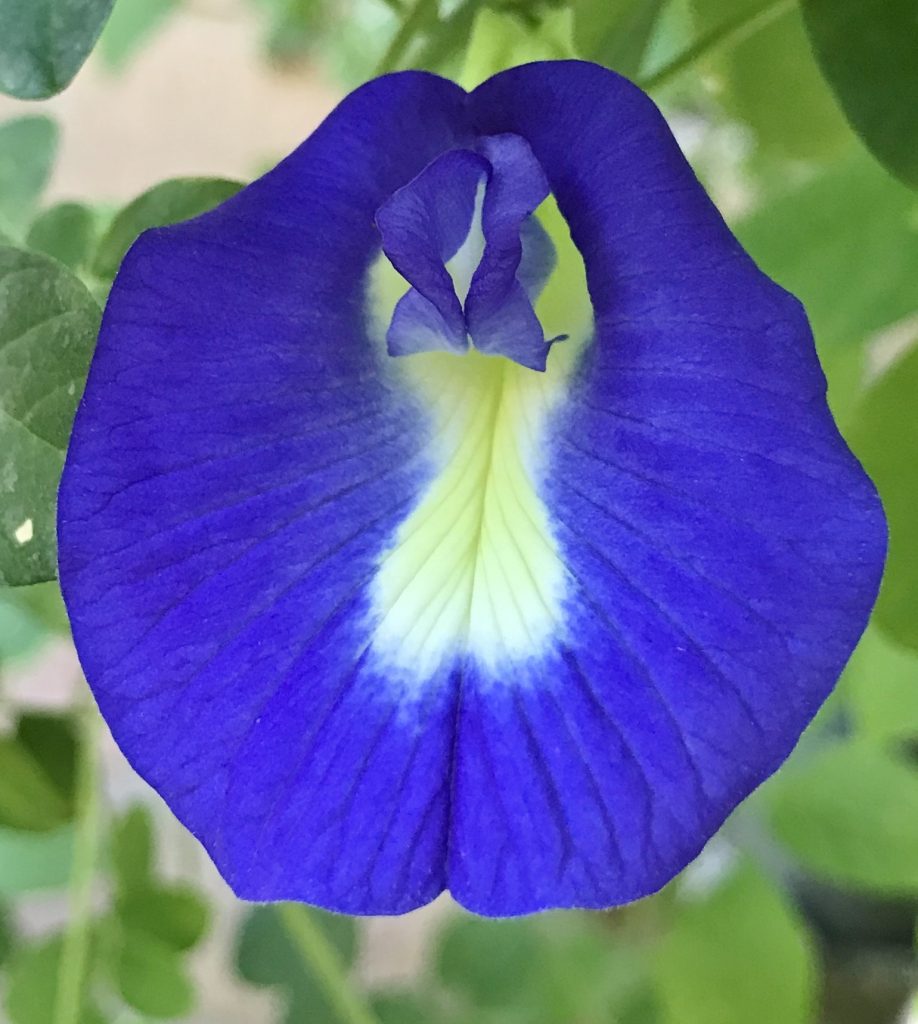by Anita Westervelt, Texas Master Naturalist
Several years ago, I dedicated a partially dead mesquite tree as a natural trellis for a native climbing milkweed (Funastrum cynanchoides).
The vine travelled up the trunk, veered off in the appropriate direction and reached the highest branches by the second spring. Lovely globes of pink-edged white blooms peppered the vine in summer. Flowers turned into dangling, short fleshy teardrops, like green Christmas ornaments.
The seed pods split open, loosening their helicopter-like seed-transporting fluff. Winds blew seed toward the resaca. Climbing milkweed leaves are important to monarch and queen caterpillars. One vine will feed plenty; limiting the plant population in your garden is wise unless you want the vines taking over. Be careful which way the wind blows.
After the climbing milkweed success, I added a blue-blooming, non-native, vine that is certainly awesome in its uniqueness. Cuban pea vine (Clitoria ternatea) became a companion to the milkweed, gracing the tree trunk with hummingbird-attracting blooms.


Native to tropical Asia, Cuban pea vine is not freeze tolerant, but will reseed in spring. There’s a fine line with sun exposure: full sun keeps the vegetation full and green, too strong sun prohibits blooms. Planting in clay soil is tolerated as long as it is well drained.
I’d planted another Cuban pea vine in the courtyard where it receives full morning sun. This vine needs fence, trellis, string, or tree bark for support. I started it at a short fence and then tied string between the fence and strategically placed masonry screws in the brick. It had no problem vining up the string and filling out.
It was a prolific bloomer mid-summer through fall — the more flowers, the more hummingbirds. Likewise, the more flowers, the more seed pods — which guarantee propagation — but remember, it’s in the pea family, a prolific propagator. Be vigilant and thin out new spring growth.
While the milkweed and Cuban were doing their thing, a native Berlandier trumpet (Acleisanthes obtusa) had made its way to the base of the vine tree. Judging by the length of the vine, it had quietly been vining up the tree for some time.
If you’re not familiar with this plant, the flowers are beautiful clumps of small white trumpet-like blooms with pink filaments and anthers that make the petals look like they’re splashed with pink polka-dots. The flowers bloom through all seasons — at night — opening late afternoon and closing by morning — great targets for pollinating by night-flying moths.
One of my favorite vines is common balloon vine (Cardiospermum halicacabum). It’s especially fun this time of year because the balloons turn cinnamon-colored and look like fall-festive lanterns dangling in the garden. This vine likes a support, too. In the wild, it will wend its way over shrubs and other plants, but can be trained to a trellis in a garden.
I planted the common balloon vine to cover part of a chain-link fence. Tiny white flowers bloom during all seasons providing nectar for winter-lingering butterflies.
The fruit is tissue-paper-thin when dry. Each pod contains two or three round black, white-tipped seeds. Bob-white quail eat the seeds.


Leave a Reply